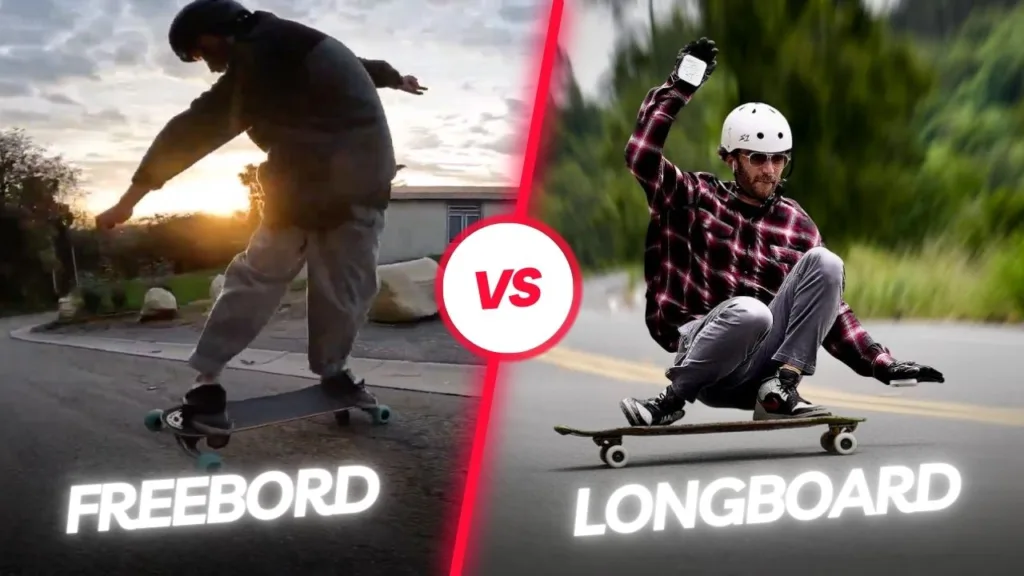When it comes to carving the streets and seeking that exhilarating rush, two board sports often come to mind: Freebording and Longboarding. While they share similarities, each sport has its own unique characteristics and techniques. In this article, we’ll delve into the world of Freebording and Longboarding, highlighting the key differences between these thrilling pursuits.
Freebording: The Art of Simulating Snowboarding on Pavement
- Design and Wheels: Freebords are designed with two central wheels that rotate independently, allowing riders to simulate the edge control of snowboarding. This pivotal feature distinguishes Freebords from traditional skateboards and Longboards. The outer wheels are slightly raised, creating the sensation of carving on snow.
- Maneuverability: Freebords are renowned for their exceptional maneuverability. Riders can make sharp turns and carve with precision, mimicking the fluid motions of snowboarding. This flexibility makes Freebording a fantastic choice for those seeking to replicate the snowboarding experience on pavement.
- Learning Curve: Learning to Freebord can be challenging due to the unique design and riding style. Riders must adapt to the six-wheel configuration and the requirement for precise weight distribution to initiate turns. However, once mastered, Freebording provides an unparalleled sense of control and freedom.
- Tricks and Style: Freeborders often incorporate tricks and spins into their rides, adding an extra layer of excitement to the sport. This emphasis on style and creativity sets Freebording apart and attracts riders who relish the challenge of mastering complex maneuvers.
Longboarding: Fast Downhill Riding
- Design and Wheels: Longboards typically have a longer deck and larger, softer wheels compared to traditional skateboards. The deck’s design varies widely, catering to different styles of riding, including cruising, downhill racing, and freestyle tricks.
- Speed and Stability: Longboarding is known for its speed and stability. Riders can achieve high speeds while feeling secure due to the stability provided by the longer wheelbase and softer wheels. Downhill longboarding is particularly popular among those seeking an adrenaline rush.
- Variety of Riding Styles: Longboarding offers a wide range of riding styles. From cruising and commuting to downhill racing and freestyle tricks, longboarders can choose the discipline that suits their preferences and skill level.
- Accessibility: The riding style is maybe more intuitive, making it easier for newcomers to pick up the basics quickly. But it has nothing compared to snowboard feelings!
Conclusion: Choosing Your Carving Adventure
In the world of board sports, Freebording and Longboarding each offer a unique and thrilling experience. While Freebording seeks to replicate the sensation of snowboarding on pavement with its six-wheel design and focus on precise carving, Longboarding provides versatility and speed.

Join the freebord community for a thrilling ride and a sense of freedom on the streets. So, grab your board and carve your path with us! 🤙


